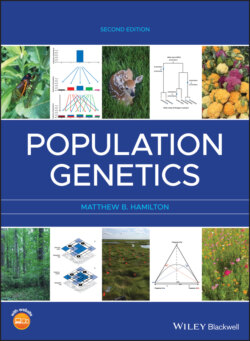Читать книгу Population Genetics - Matthew B. Hamilton - Страница 55
Problem box answers Problem box 2.1 answer
ОглавлениеUsing the allele frequencies in Table 2.3 we can calculate the expected genotype frequencies for each locus:
D3S1358: 2(0.2118)(0.1626) = 0.0689;
D21S11: 2(0.1811)(0.2321) = 0.0841;
D18S51: (0.0918)2 = 0.0084;
vWA: (0.2628)2 = 0.0691;
FGA: 2(0.1378)(0.0689) = 0.0190;
D8S1179: 2(0.3393)(0.2015) = 0.1367;
D5S818: 2(0.3538)(0.1462) = 0.1035;
D13S317: 2(0.0765)(0.3087) = 0.0472;
D7S820: 2(0.2020)(0.1404) = 0.0567.
As is evident from the allele designations, the amelogenin locus resides on the sex chromosomes and can be used to distinguish chromosomal males and females. It is a reasonable approximation to say that half of the population is male and assign a frequency of 0.5 to the amelogenin genotype. The expected frequency of the 10‐locus genotype is therefore 0.0689 × 0.0841 × 0.0084 × 0.0691 × 0.0190 × 0.1367 × 0.1035 × 0.0472 × 0.0567 × 0.5 = 1.210 × 10−12. The odds ratio is one in 862 551 506 311. This 10‐locus DNA profile is effectively a unique identifier since the human population in 2018 was approximately 7.7 billion, and we would expect to observe this exact 10‐locus genotype only once in a population 112 times larger than the human population in 2018. In fact, it is probable that this 10‐locus genotype has only occurred once in all of the humans who have ever lived.
